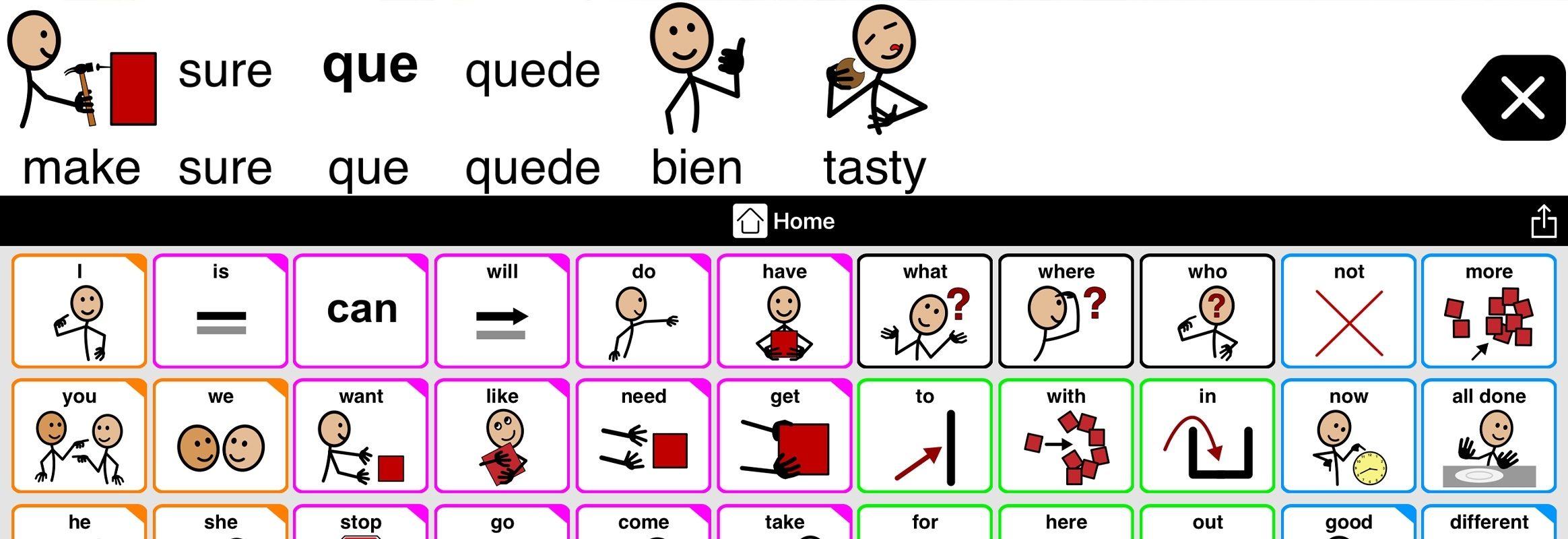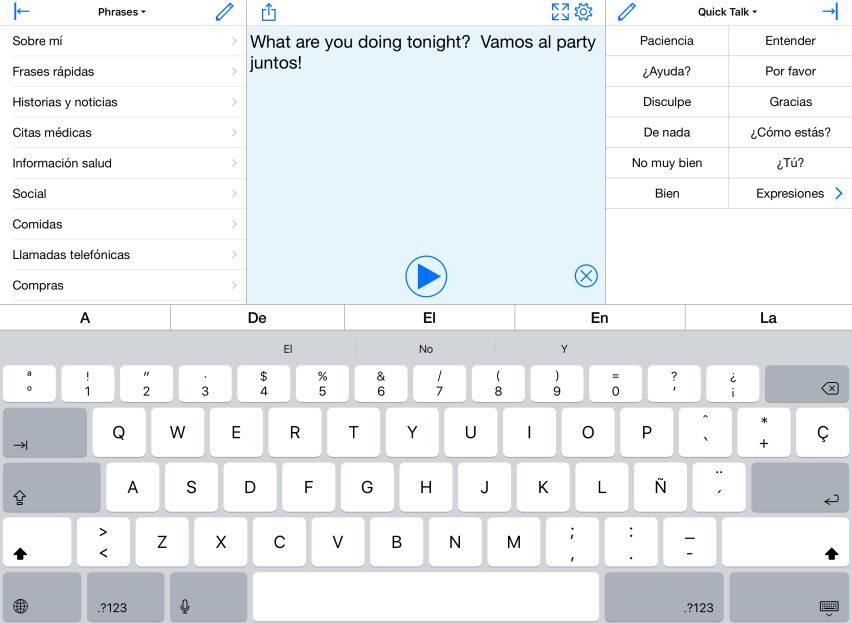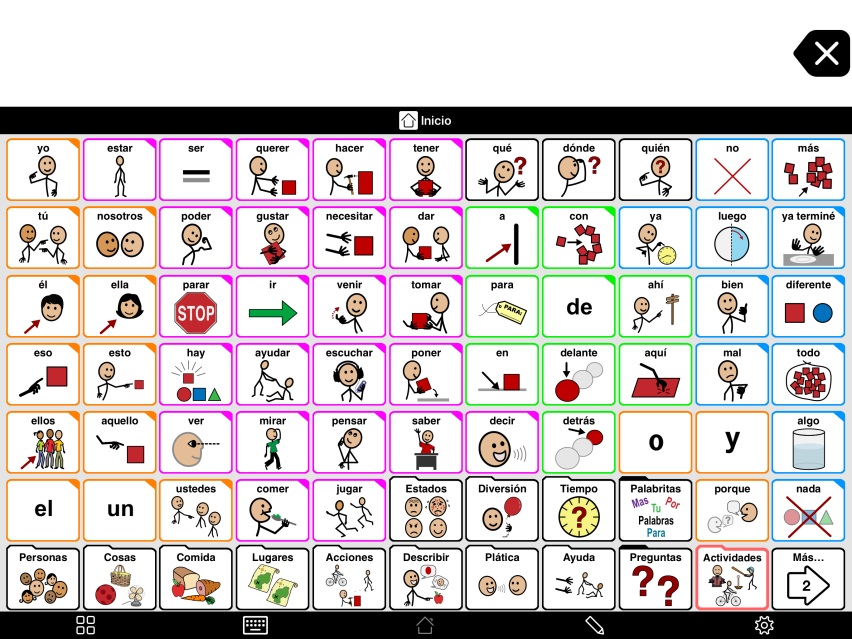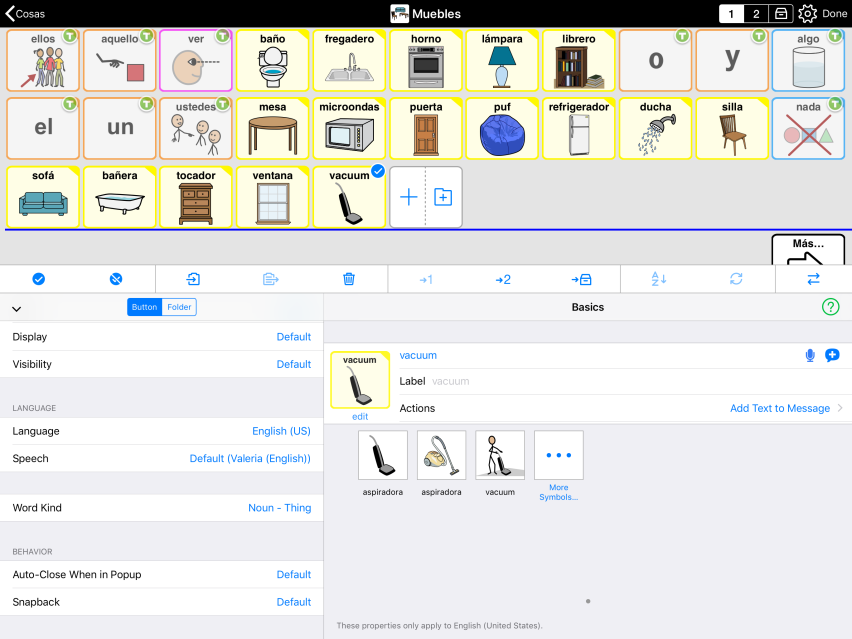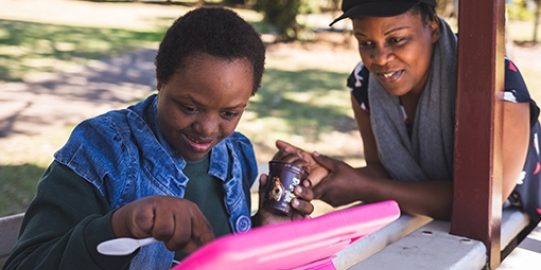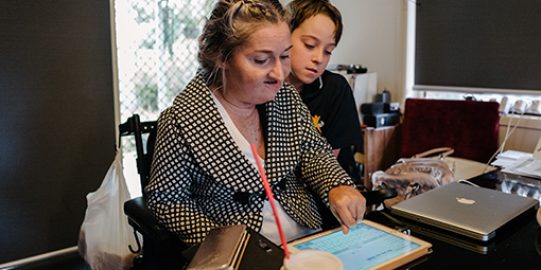In the beginning
When Augmentative and Alternative Communication (AAC) systems first became available, most could only be used with one language. A few that supported multiple languages, but not as integrated systems. You had to choose one language or the other. It was either impossible or extremely complex to switch over to the other language. This did not provide a great experience to someone who needed to use two languages on a daily basis.
One of our core beliefs about AAC is that it should be a tool that allows the user to explore the reality of language use. It’s not a strict rule book that dictates how you can or should use language. With this in mind, we wanted to make a system that reflected real bilingual use. We needed to support the actual vocabulary, voices, and use patterns of someone who is bilingual or multilingual. We also decided early on not to make this a premium feature or add-on that costs extra. Our users shouldn’t have to pay more to speak the languages that are part of their life.
